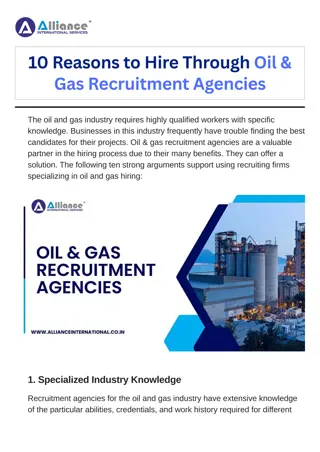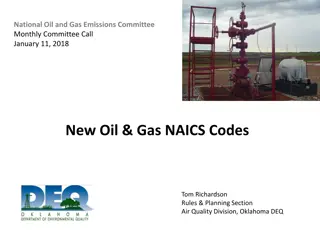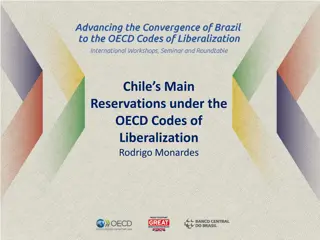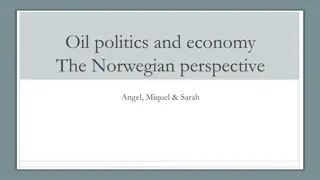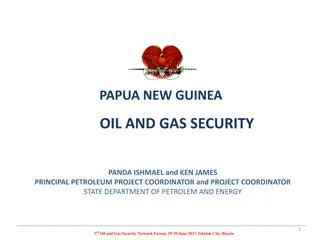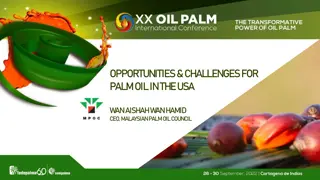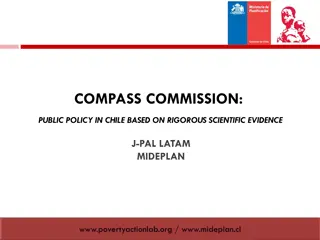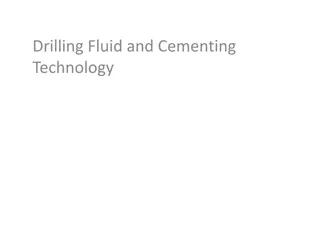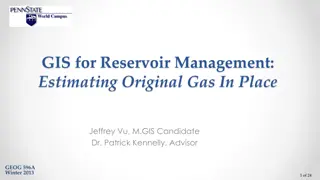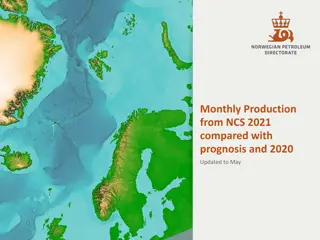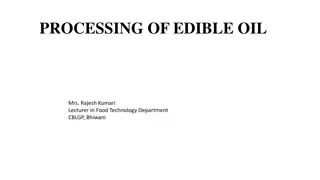Oil and Gas Security in Chile: Trends and Challenges
Chile's oil and gas security landscape, discussed by Mar a Valenzuela at the 4th Oil and Gas Security Network Forum in Tokyo, addresses the country's primary energy supply, crude oil production and imports, refinery production, natural gas demand, and the impact of natural disasters on energy sourcing strategies.
Download Presentation

Please find below an Image/Link to download the presentation.
The content on the website is provided AS IS for your information and personal use only. It may not be sold, licensed, or shared on other websites without obtaining consent from the author.If you encounter any issues during the download, it is possible that the publisher has removed the file from their server.
You are allowed to download the files provided on this website for personal or commercial use, subject to the condition that they are used lawfully. All files are the property of their respective owners.
The content on the website is provided AS IS for your information and personal use only. It may not be sold, licensed, or shared on other websites without obtaining consent from the author.
E N D
Presentation Transcript
Update on OIL AND GAS SECURITY Chile Mar a Valenzuela Engineer of Energy Security and Market Division Ministry of Energy / Government of Chile 1 4th Oil and Gas Security Network Forum, 7-8 March 2018, Tokyo, Japan
Oil and Gas Supply and Demand Situation CHILE Primary Energy Supply, 2005 - 2016 Final Energy Demand, 2005 - 2016 29 Mtoe 29 Mtoe 32 Mtoe 23 Mtoe Source: Balance Nacional de Energ a 2016 Source: Balance Nacional de Energ a. AAGR: Average Annual Growth Rate Others: Wind Energy, Solar Energy and Biogas. 2 4th Oil and Gas Security Network Forum, 7-8 March 2018, Tokyo, Japan
Oil and Gas Supply and Demand Situation CHILE Crude Oil Production and Imports, 2005 - 2016 Despite the existence of domestic production, the country is in essence 2% a net importer. Chile does not export crude oil. 98% The total share of South American countries in crude oil imports has grown from 62% in 2005 to 98% in 2016. Source: Balance Nacional de Energ a Crude Oil Imports by Origin Types of Crude Oil Imported Source: C mara de Comercio de Santiago. Source: Memorias ENAP. 3 Others South America: Bolivia and Trinidad & Tobago. 4th Oil and Gas Security Network Forum, 7-8 March 2018, Tokyo, Japan
Oil and Gas Supply and Demand Situation CHILE Refinery Production, 2005 - 2016 Refiner as Aconcagua Refiner as BioB o Refiner a Gregorio Source: Balance Nacional de Energ a Oil Products Imports by Origin, 2016 Oil Products Exports by Destination, 2016 Source: C mara de Comercio de Santiago. Source: C mara de Comercio de Santiago. Others: Peru, Norway, Germany, Netherlands and Spain. 4 4th Oil and Gas Security Network Forum, 7-8 March 2018, Tokyo, Japan
Oil and Gas Supply and Demand Situation CHILE Natural Gas Demand by Sector, 2005 - 2015 Share of Natural Gas in Power Generation Mix, 2005 - 2015 Source: Generaci n Bruta SIC-SING CNE. Source: Balance Nacional de Energ a. Others: Includes Petcoke, Cogeneration, Biomass During 2007-2008 Chile experienced extreme drought, and the almost complete interruption of natural gas supply from Argentina (imports continued for residential and commercial sector) As a result of that situation, power generators switched to diesel. Then the electric system set to coal and recently to renewable energy, whereas industry switched to oil. As a countermeasure, two onshore liquefied natural gas (LNG) regasification terminals were developed in a public private partnership and since 2010 has Chile depended on imported LNG for its gas supply. 5 4th Oil and Gas Security Network Forum, 7-8 March 2018, Tokyo, Japan
Oil and Gas Supply and Demand Situation CHILE Natural Gas Production and Imports, 2005 - 2015 Domestic natural gas is produced in the Magallanes Region, the southernmost region of Chile, and is also used to meet local electricity and heating Source: Balance Nacional de Energ a 2015 demand. 78% EXPORTS: In 2016, 7% of the imported LNG was exported to 22% Argentina via gas pipelines. This was the first time that Chile exported natural gas. Natural Gas Imports by Origin LNG SOURCES Piped Gas: Source: C mara de Comercio de Santiago. Argentina LNG: Other countries 6 4th Oil and Gas Security Network Forum, 7-8 March 2018, Tokyo, Japan
Oil and Gas Supply and Demand Situation CHILE Transnational Gas Pipeline Capacity [mcm/d] Length [km] Operation Status for Gas Imports/Exports Norandino 7.8 1056 Operational since 2016 solely for exports to Argentina Operational as at 2017 exclusively for exports to Argentina Sporadic operation for minimum quantities imported from Argentina and for the last swap GasAndes 10.8 541 Gas Pac fico 6.0 674 C ndor-Posesi n 2.0 9 Sporadic operation for imports from Argentina C ndor-Posesi n 2 2.5 9 Sporadic operation for imports from Argentina To date there are no transnational pipeline projects. Regasification Capacity [mcm/d] Status Terminal Date of Operation Source: Energy Policies Beyond IEA countries Chile 2018 review. Mejillones LNG 5.5 July 2009 Existent Quintero LNG 15 June 2010 Andes LNG 10 2020 Projected LNG Penco-Lirqu n 15 2020 (estimated) Talcahuano LNG 8.5 2019 7 4th Oil and Gas Security Network Forum, 7-8 March 2018, Tokyo, Japan
Oil and Gas Security Policy CHILE Oil Stockpiling Indicators to Gauge Supply Security Supply/Demand Monitoring by weekly reports on projections: Product Storage [Thounsands m3] Days of Stocks 2017 - Oil Products: Imports, refinery production, stocks and demand. Crude Oil - Gas Imported: Imports, regasification, stocks and demand. 518 19 Motor Gas - Gas Production: Production, demand and line-pack. 242 19 Kerosene Monitoring of Gas & Oil Production by monthly reports. 110 24 Diesel The stock level is monitored to accomplish the following: 404 15 Fuel Oil - Oil products: 25 days 71 23 LPG - Gas: 10 days 242 38 Oil industry participants currently have the obligation to hold stocks. Article 7 of Decree with Force of Law N 1 of 1978 of the Ministry of Mining states the following: Every producer or importer of liquid, petroleum-based fuels is required to maintain an average stock of each product which is equal to 25 days of average sales during the previous six months or average imports for the same period of time, if it is for own consumption. Chile s acknowledges that the current 25-day stockholding obligation needs to be updated. 8 4th Oil and Gas Security Network Forum, 7-8 March 2018, Tokyo, Japan
Oil and Gas Security Policy CHILE Oil & Gas Supply Security Framework: National Energy Policy for 2050 The National Energy Policy is sustained by four pillars: Guidelines set forth in the National Energy Policy: Develop national, regional and municipal plans for managing risks and emergencies affecting the energy sector that are aligned with other sectorial and national plans. Increase the security of supply, storage, transport and distributions of fuels. Promote research into and exploration and exploitation of Chiles s hydrocarbon resources. 9 4th Oil and Gas Security Network Forum, 7-8 March 2018, Tokyo, Japan
Oil and Gas Security Policy Gaps CHILE Strengthen regional oil and gas security It is in Chile s interest to maintain regional collaboration with the APEC member economies, with the aim of contributing to keep a bridge of cooperation in technical and emergency response matters. This collaboration will allow economies to provide public value to emergency management in the different phases of the risk cycle, with relevance in the preventive phase. Chile's experience could greatly contribute to strengthening APEC s regional work in this area, as well as to the exchange of best practices among individual economies. 10 4th Oil and Gas Security Network Forum, 7-8 March 2018, Tokyo, Japan
Thank you Update on OIL AND GAS SECURITY Chile Email Address: mvalenzuela@minenergia.cl Contact Number: +56 2 22367 75 79 11 4th Oil and Gas Security Network Forum, 7-8 March 2018, Tokyo, Japan





